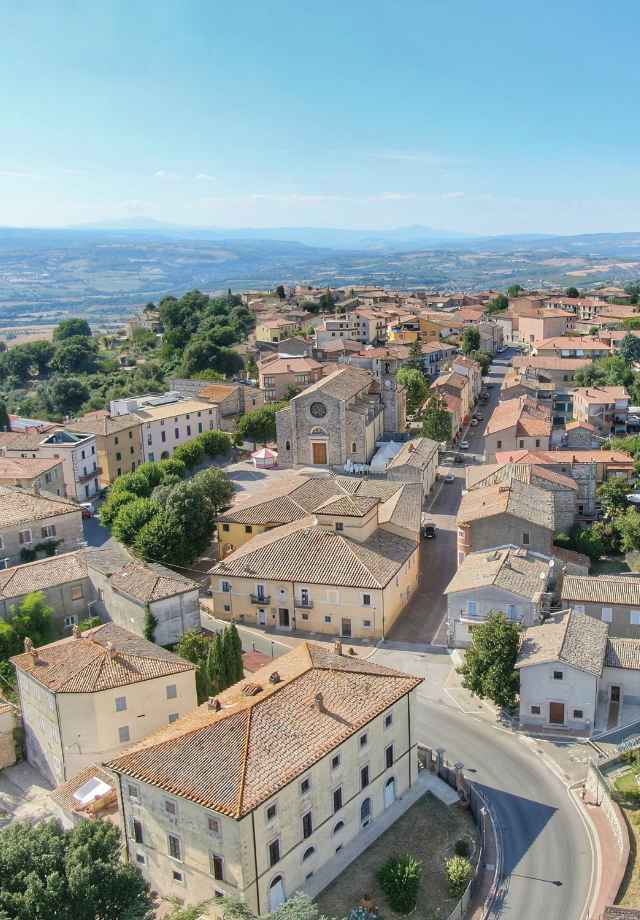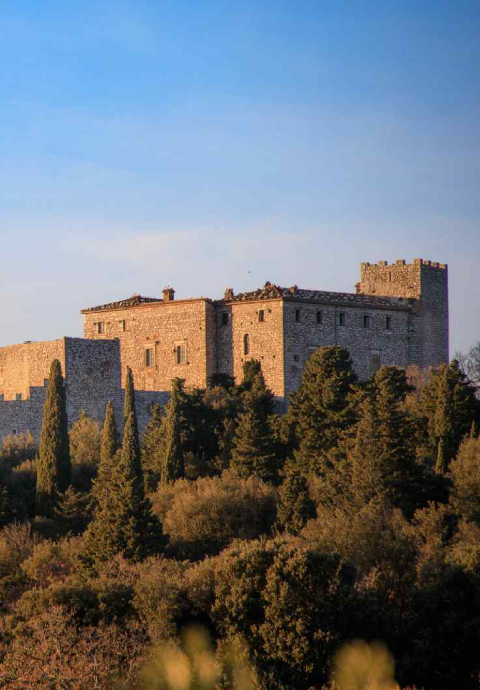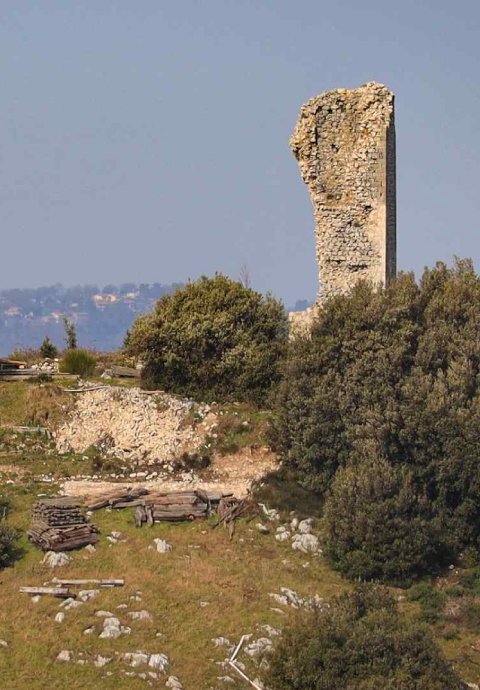On one side the Valtiberina and the Lake of Alviano on the other the colorful valley of Cocciano to the south the gullies and the castle of Alviano to the north the castle of Montecchio: the Guardea area has a variety of landscapes and a unique history worth telling.
The history of one of the most powerful castles in Valtiberina
The territory of Guardea has been inhabited since the Palaeolithic period. In addition to the remains of the castelliere (fortified borough) on Mount Civitelle and the polygonal barrages along the Fosso Marrutana, sporadic finds attest that the territory was inhabited before Romanisation, which certainly led to the construction of several rustic villas in the fertile territory after the 3rd century BC.
Guardea in the Middle Ages
We do not know much about the origins of the first settlement, but already from the name of Guardea – ‘wart’ in Lombard means ‘guardian’ – we can deduce the ancient origins of the castle, which may once have been a ‘lookout point’ on the very hill where we can now see the ruins of an early fortified settlement that we can assume was erected around the 9th century BC.
We also know of the existence of the very ancient parish church of San Cesareo, the remains of which are now southwest of the town centre near the polygonal walls and the remains of the Monastery of San Silvestro, whose parish title was transferred to the church on the hill and, therefore, predates it.
The area of the gullies, known as ‘del Marruto’, also tells of a castle that existed there and, with it, a whole series of monasteries – including San Salvatore, San Benedetto, San Giacomo and Monte Corvo – that enriched the surrounding hills.
The first written record of Guardea dates back to the year 1158 when Pope Adrian IV purchased ‘half of certain castles of Castiglione in Teverina, Carmignano, Canepina and Bulsignano’ from the daughter of a Raynaldo of Guardea who, before his death, was to extend his power beyond the Teverina area into the territory of Viterbo.
In 1232, a Raynaldo de Uffreduccio of Bonconte d’Alviano appears in Alviano and, at the end of the previous century, we know that the Castle of Poggio is also called the Ufreducci. Alviano who, shortly afterwards, would become ‘lords of Guardea’.
In the hands of the Alviano family, the Castle of Guardege, due to its position, became a bulwark of the defensive system of the Alviani Status first and then of Todi when Alviano entered its orbit.





